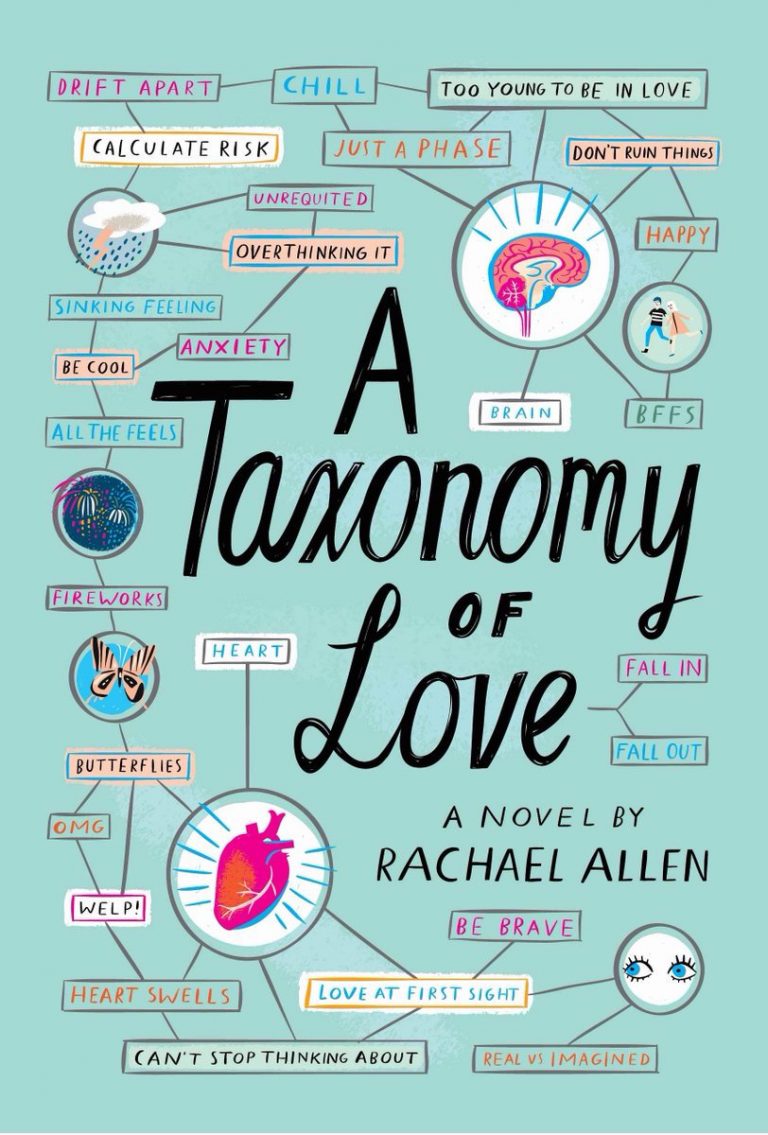

Title: A Taxonomy of Love
Author: Rachael Allen
Release Date: January 9, 2018
Publisher: Amulet Books
Review Spoilers: High, but noted
GoodReads | Amazon
Taxonomy follows Spencer, originally 13 years old when we first meet him. On top of the usual social awkwardness and growing pains of puberty, Spencer also struggles with how his peers bully him and how the world perceives him because of his Tourette’s Syndrome.
It felt like I was reading a good slice-of-life anime – the plot is more about characters and relationships than it is about external actions or problems. There’s a sense of calmness and groundedness to this book, which I really enjoyed.
When Hope moves in next door to Spencer, the two develop a close friendship that almost veers into a romantic relationship more than a few times. After a series of obstacles, the two grow up, grow apart, and later grow back together. This book examines how friendships change, break, and heal over a period of years.
I really enjoyed Taxonomy because I think it does a great job of examining the stages of a relationship from start to finish – it’s literally a taxonomic dissection of how real life friendships age.
I also enjoyed how the author handled the portrayal of the main character, Spencer. Spencer is an incredibly sympathetic, realistic character, and while his experiences with micro-aggressions and ableist behaviors (due to his Tourette’s Syndrome) inform his character, they do not define it. At the end of the day, Spencer is just a teenage boy trying to navigate friendships and romantic relationships, not a martyred, sick-lit character designed to evoke pity.
The other wonderful part of this book was its integration of multiple story-telling styles. In addition to narration, there are tons of taxonomic diagrams and text messages and letters exchanged about and between the characters that integrate well with the text and add a cute, visual bonus for readers.
The taxonomic charts in particular help anchor the reader as to what Spencer is struggling with at each time in his life. He likes to use taxonomies to classify and understand his world better, and they function as humorous, how-to guides for Spencer’s obstacles.
The only real detractor from this book was that the plot was a little predictable- *spoiler alert* – after Hope and Spencer develop a rapport as friends, a personal tragedy befalls Hope (the death of her sister), and that friendship goes off the rails. Years later, they overcome their differences to become friends (and eventual romantic partners) again. It felt cliché that Hope’s sister would die tragically after we’ve established that they have a close relationship, and that Hope would becomes less manic-pixie and more punk-goth as a result. *end spoiler*
Overall, I highly recommend A Taxonomy of Love for fans of YA friendships and romance, especially those who like a little taxonomic dash of science in the mix.